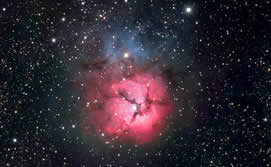NASA is preparing the STS-134 mission, which will carry the Alpha-2 Magnetic Spectrometer to the International Space Station; Spain has been an active collaborator.
The space shuttle Endeavour is preparing for its last voyage, in which it will carry Spanish technology on board. This NASA mission is called STS-134 and its purpose is to do research into the origins of the universe.
Launch is expected to be on April 19th. It will carry the Alpha-2 Magnetic Spectrometer (AMS), in which Spain has participated together with fifteen countries, to the International Space Station. In fact, two Spanish institutions are collaborating on the mission: the Center for Energy, Environmental and Technological Research (CIEMAT), and the Canary Islands Astrophysics Institute (IAC).
The AMS-02 is a particle detector designed to study the universe and its origins. It will operate as an external module mounted on the International Space Station (ISS).
The advantage of this instrument is that enables searching for antimatter and dark matter. Further, it can be used to make a detailed analysis of the composition and flow of cosmic rays, in conditions that are free of the effects of the Earth’s atmosphere.
Observations from the AMS-02 will help to resolve fundamental questions in physics, such as the nature of dark matter and what happened to the antimatter produced during the creation of the universe.
Specifically, CIEMAT, part of the Ministry of Science and Innovation, has designed one of the instruments on the AMS-02: the Ring Imaging Cherenkov particles detector (RICH detector), which will contribute a key part of what is expected from this apparatus.
CIEMAT has built all of the multiplier matrix for this detector, and has been responsible for the testing, as well as developing several of its components. The IAC has built the boxes to house its electronics, in addition to the calorimeter.
The mission will also do research into the composition and flow of cosmic rays, a source of energy whose origin is not well defined, and which include numerous elements from protons to iron nuclei.
